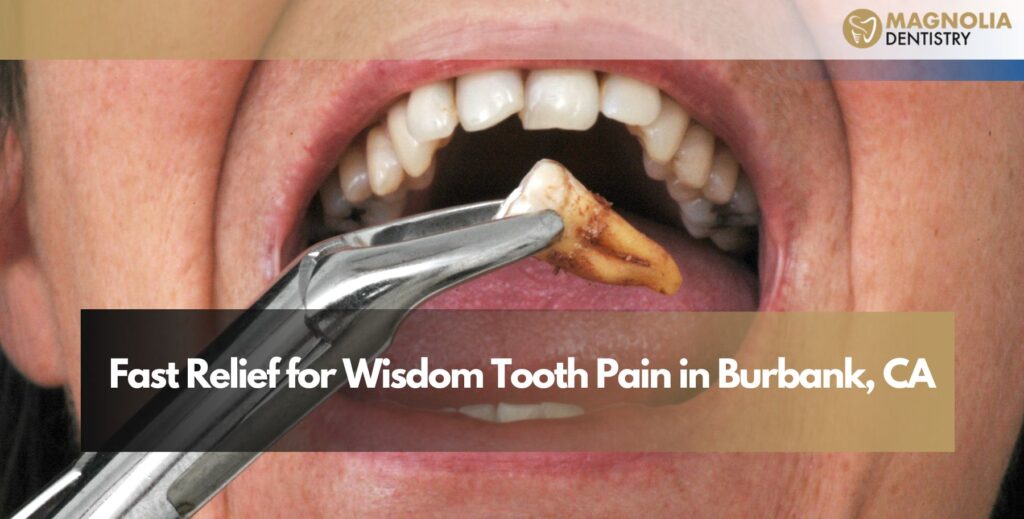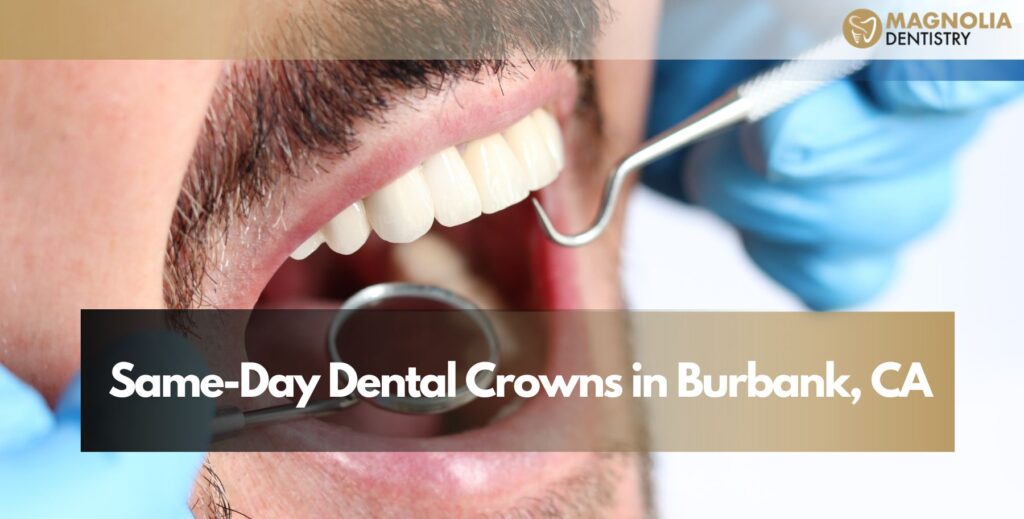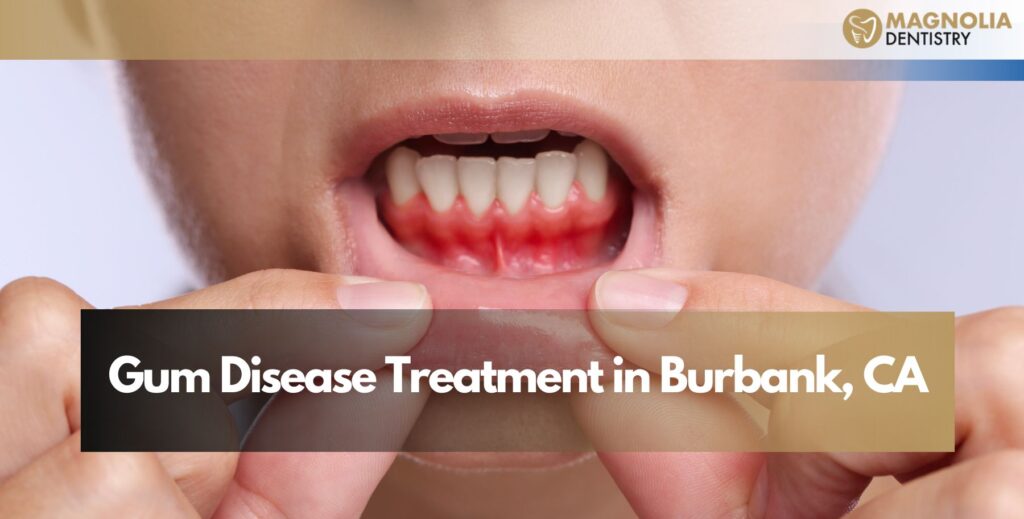Wisdom tooth pain can strike suddenly and disrupt your entire day. Whether it’s a dull ache or sharp, throbbing discomfort, the pain from erupting or impacted wisdom teeth demands immediate attention. If you’re experiencing wisdom tooth pain, you’re not alone — millions of people deal with this common dental issue every year.
The good news? Relief is available, and you don’t have to suffer through the pain. Understanding what causes wisdom tooth discomfort and knowing your treatment options can help you get fast, effective relief and prevent serious complications down the road.
Why Do Wisdom Teeth Cause So Much Pain?
Wisdom teeth, also known as third molars, are the last teeth to develop in your mouth, typically emerging between ages 17 and 25. Unfortunately, modern human jaws often lack sufficient space to accommodate these extra molars, leading to a range of painful problems.
Common Causes of Wisdom Tooth Pain
Impaction: When wisdom teeth don’t have enough room to emerge properly, they become trapped beneath the gum line or grow at awkward angles. This impaction creates pressure against neighboring teeth and surrounding bone, causing significant pain and swelling.
Partial Eruption: Sometimes wisdom teeth only partially break through the gums, creating a flap of tissue that becomes a breeding ground for bacteria. Food particles and debris get trapped underneath, leading to infection and inflammation called pericoronitis.
Crowding: As wisdom teeth try to push through, they can crowd existing teeth, causing misalignment, bite problems, and general discomfort throughout your mouth.
Tooth Decay: Because wisdom teeth are located at the very back of your mouth, they’re difficult to clean properly. This makes them highly susceptible to cavities, which can cause sharp, persistent pain.
Cysts or Tumors: In rare cases, impacted wisdom teeth can lead to the development of cysts or tumors in the jawbone, causing pain, swelling, and potential damage to surrounding structures.
Recognizing the Warning Signs
Wisdom tooth pain doesn’t always announce itself gradually. Sometimes it appears suddenly and intensifies rapidly. Watch for these telltale symptoms:
- Throbbing or sharp pain in the back of your mouth
- Swollen, red, or tender gums around the wisdom tooth area
- Jaw stiffness or difficulty opening your mouth fully
- Bad breath or unpleasant taste in your mouth
- Headaches or earaches on the affected side
- Swelling in your jaw or face
- Bleeding or tender gums when brushing
If you’re experiencing any of these symptoms, it’s time to seek professional dental care. Ignoring wisdom tooth pain can lead to more serious complications, including infection, damage to adjacent teeth, and even cyst formation.
Immediate Home Remedies for Quick Pain Relief
While professional dental treatment is essential for addressing the root cause of wisdom tooth pain, these home remedies can provide temporary relief until you can see your dentist.
Cold Compress Application
Applying ice to the outside of your cheek can significantly reduce swelling and numb the pain. Wrap ice cubes in a clean cloth or use a commercial ice pack, and apply it to the affected area for 15-20 minutes. Repeat every few hours as needed. The cold temperature constricts blood vessels, reducing inflammation and providing numbing relief.
Saltwater Rinses
One of the simplest yet most effective home remedies is a warm saltwater rinse. Mix half a teaspoon of salt in eight ounces of warm water and gently swish it around your mouth for 30 seconds, focusing on the painful area. Repeat this several times throughout the day. Saltwater acts as a natural disinfectant, reducing bacteria and soothing inflamed gum tissue.
Over-the-Counter Pain Medications
Nonsteroidal anti-inflammatory drugs (NSAIDs) like ibuprofen are highly effective for managing wisdom tooth pain. They not only relieve pain but also reduce inflammation that’s often the source of discomfort. Acetaminophen is another option if you can’t take NSAIDs. Always follow the dosage instructions on the package and consult with your dentist if you have any concerns.
Clove Oil Application
Clove oil has been used for centuries as a natural remedy for dental pain due to its numbing properties. The active compound, eugenol, acts as a natural anesthetic. Apply a small amount of clove oil to a cotton ball and gently dab it on the affected gum area. You can also mix clove oil with a carrier oil like olive oil to dilute it if the sensation is too intense.
Peppermint Tea Bags
Used peppermint tea bags can provide soothing relief when applied to painful gums. After steeping a tea bag in hot water, let it cool until it’s comfortably warm (or chill it in the freezer for a few minutes for a cooling effect), then place it directly on the affected area. Peppermint contains menthol, which has natural numbing and anti-inflammatory properties.
Elevation While Sleeping
When lying down, blood flow to your head increases, which can intensify throbbing wisdom tooth pain. Sleep with your head elevated on extra pillows to reduce blood pressure in the affected area and minimize nighttime discomfort.
When to Seek Professional Dental Care
Home remedies provide temporary relief, but they don’t address the underlying problem causing your wisdom tooth pain. Professional evaluation is crucial, especially if you experience any of the following:
Signs You Need Immediate Dental Attention
Severe, Unbearable Pain: If over-the-counter medications aren’t controlling your pain, or if the pain is getting progressively worse, you need professional intervention immediately.
Significant Swelling: Swelling that extends beyond the immediate gum area to your jaw, face, or neck indicates a spreading infection that requires urgent treatment.
Fever or Chills: These symptoms suggest a systemic infection that could become dangerous if left untreated. Seek emergency dental care right away.
Difficulty Swallowing or Breathing: If swelling is affecting your ability to swallow or breathe, this is a medical emergency. Go to the emergency room immediately.
Persistent Bleeding: While minor bleeding around wisdom teeth isn’t uncommon, continuous or heavy bleeding requires professional attention.
Pus or Discharge: The presence of pus indicates an active infection that needs antibiotic treatment and possibly drainage.
What Your Dentist Can Do
During your appointment, your dentist will conduct a thorough examination, including X-rays to assess the position of your wisdom teeth and the extent of any problems. Based on the findings, they may recommend:
Antibiotics: If infection is present, antibiotics can eliminate the bacteria causing inflammation and pain.
Professional Cleaning: Removing debris and bacteria from around partially erupted wisdom teeth can provide significant relief.
Pain Management: Prescription-strength pain medications may be necessary for severe discomfort.
Extraction: In many cases, removing problematic wisdom teeth is the most effective long-term solution.
Understanding Wisdom Tooth Extraction
Wisdom tooth extraction is one of the most common dental procedures performed. While the thought of tooth extraction might seem daunting, modern dentistry has made the process safe, efficient, and surprisingly comfortable.
Types of Extraction Procedures
Simple Extraction: If your wisdom tooth has fully erupted and is accessible, your dentist can remove it through a straightforward extraction procedure using local anesthesia.
Surgical Extraction: Impacted wisdom teeth require a more complex surgical approach. Your dentist or oral surgeon will make an incision in the gum tissue, possibly remove some bone, and extract the tooth — sometimes in sections for easier removal.
What to Expect During the Procedure
Before the extraction, you’ll receive anesthesia appropriate for your case — local anesthesia, sedation, or general anesthesia for more complex cases. Throughout the procedure, you’ll feel pressure but no pain. The entire process typically takes 20-40 minutes per tooth.
Recovery and Healing
Most patients experience significant pain relief within a few days following wisdom tooth extraction. Here’s what to expect:
First 24 Hours: Some bleeding, swelling, and discomfort are normal. Apply ice packs, take prescribed medications, and rest.
Days 2-3: Swelling typically peaks around day two or three, then begins to subside. Continue with soft foods and gentle saltwater rinses.
Week 1: Most patients can return to normal activities. The extraction site continues healing, and discomfort should be minimal.
Complete Healing: Full healing of the extraction site takes several weeks, but you’ll feel significantly better much sooner.
Long-Term Benefits of Addressing Wisdom Tooth Problems
While getting wisdom teeth removed might seem like a hassle, addressing problematic wisdom teeth offers numerous long-term benefits for your oral health.
Preventing Future Complications
Removing wisdom teeth before they cause serious problems prevents:
- Damage to adjacent teeth from crowding or pressure
- Cyst formation around impacted teeth
- Chronic infections and gum disease
- Bite misalignment and jaw problems
- Severe tooth decay in hard-to-reach molars
Protecting Your Investment in Oral Health
If you’ve had orthodontic treatment, problematic wisdom teeth can undo years of work by shifting your carefully aligned teeth. Removing wisdom teeth protects your investment in a healthy, straight smile.
Improving Overall Oral Hygiene
Without wisdom teeth crowding the back of your mouth, you can more effectively brush and floss your remaining teeth, reducing your risk of cavities and gum disease throughout your mouth.
Choosing the Right Dental Care Provider
When you’re experiencing wisdom tooth pain, choosing an experienced dental provider makes all the difference in your treatment outcome and comfort level.
What to Look for in a Dental Practice
Experience and Expertise: Look for dentists with extensive experience in wisdom tooth evaluation and extraction procedures.
Advanced Technology: Modern diagnostic tools like digital X-rays and 3D imaging ensure accurate assessment and treatment planning.
Sedation Options: A practice offering various sedation options can make your procedure more comfortable, especially if you experience dental anxiety.
Emergency Availability: Wisdom tooth pain doesn’t follow a schedule. Choose a practice that offers emergency dental services when you need them most.
Patient-Centered Care: Compassionate, thorough communication helps you understand your treatment options and feel confident in your care.
Preventing Wisdom Tooth Problems
While not all wisdom tooth problems are preventable, regular dental care can help identify potential issues early, before they become painful emergencies.
The Importance of Regular Dental Checkups
Routine dental examinations, including periodic X-rays, allow your dentist to monitor your wisdom teeth development and identify problems before symptoms appear. Early detection often means simpler, less invasive treatment.
Maintaining Excellent Oral Hygiene
Even if your wisdom teeth haven’t caused problems yet, maintaining meticulous oral hygiene is essential. Brush carefully around your wisdom teeth using a soft-bristled toothbrush, floss daily, and consider using an antimicrobial mouthwash to reduce bacteria in hard-to-reach areas.
Following Through with Recommended Treatment
If your dentist recommends wisdom tooth extraction as a preventive measure, seriously consider following through. Proactive removal is often easier, involves faster recovery, and prevents the emergency pain and complications that can occur later.
Conclusion
Wisdom tooth pain doesn’t have to control your life. Whether you’re dealing with the early signs of wisdom tooth emergence or experiencing severe discomfort from impacted teeth, fast relief is available. While home remedies can provide temporary comfort, professional dental evaluation and treatment address the root cause of your pain and prevent serious complications.
Don’t wait until wisdom tooth pain becomes unbearable. Early intervention leads to better outcomes, simpler treatment, and faster recovery. If you’re experiencing any signs of wisdom tooth problems, schedule a consultation with an experienced dental professional who can evaluate your specific situation and recommend the best course of action.
At Magnolia Dentistry, Dentist in Burbank, CA, we specialize in providing comprehensive wisdom tooth care with a focus on patient comfort and optimal outcomes. Our experienced team uses the latest technology and techniques to diagnose wisdom tooth problems accurately and provide effective treatment that gets you back to your normal life quickly. Contact us today to schedule your consultation and find the fast relief you deserve.
Frequently Asked Questions
How long does wisdom tooth pain typically last?
Wisdom tooth pain can last anywhere from a few days to several weeks, depending on the cause. Pain from eruption may come and go, while pain from infection or impaction tends to worsen without treatment. Professional dental care provides definitive relief.
Can wisdom tooth pain go away on its own?
While wisdom tooth pain may temporarily subside, it typically returns and worsens over time if the underlying problem isn’t addressed. Only professional treatment can permanently resolve wisdom tooth issues.
What’s the fastest way to stop wisdom tooth pain?
For immediate relief, take ibuprofen, apply a cold compress, and rinse with warm saltwater. However, the fastest long-term solution is seeing your dentist for professional treatment that addresses the root cause.
Should I remove my wisdom teeth if they’re not causing pain?
Not necessarily. If your wisdom teeth have fully erupted, are properly aligned, and you can clean them effectively, they may not need removal. However, your dentist may recommend preventive extraction if X-rays show potential future problems.
How painful is wisdom tooth extraction?
During the procedure, you won’t feel pain due to anesthesia — only pressure. Post-extraction discomfort is manageable with prescribed medications and typically peaks within 2-3 days before improving significantly.
What can I eat after wisdom tooth extraction?
Stick to soft foods like yogurt, smoothies, mashed potatoes, scrambled eggs, and soup for the first few days. Avoid hot, spicy, crunchy, or chewy foods that could irritate the extraction site or dislodge the blood clot.
How long is recovery after wisdom tooth removal?
Most patients return to normal activities within 3-5 days. Complete healing of the extraction site takes several weeks, but discomfort typically subsides within the first week with proper care.
Can wisdom teeth cause headaches?
Yes, wisdom tooth problems can cause headaches, earaches, and jaw pain. The discomfort often radiates from the affected area to surrounding regions due to nerve connections and muscle tension.
Is it normal for wisdom teeth to hurt when they come in?
Some discomfort during wisdom tooth eruption is normal, but severe or persistent pain indicates a problem such as impaction, infection, or insufficient space. Any significant pain warrants dental evaluation.
What happens if I ignore wisdom tooth pain?
Ignoring wisdom tooth pain can lead to serious complications including severe infection, damage to adjacent teeth, cyst formation, jaw problems, and even systemic health issues if infection spreads. Always seek professional evaluation for persistent wisdom tooth pain.




